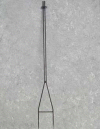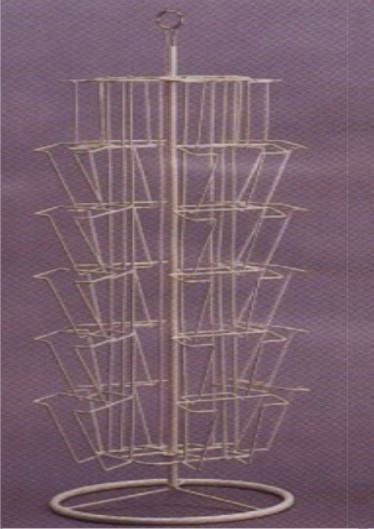




 In much of Asia, especially the so-called "rice bowl" cultures of China, Japan, Korea, and Vietnam, food is usually eaten with chopsticks.Chopsticks are two long, thin, usually tapered, pieces of wood. Bamboos the most common material, but they are also be made of various types of wood, as well as plastic, porcelain, animal bone, ivory, metal, coral, agate, and jade.During the Middle Ages, aristocrats often favored silver chopsticks since it was thought that silver would turn color if it came into contact with poison.Elegant CraftsmanshipSometimes chopsticks are quite artistic. Chopsticks can be made of lacquered wood and covered with artwork. Truly elegant chopsticks might be made of gold and embossed in silver with Chinese calligraphy. Artisans also combine various hardwoods and metal to create distinctive designs.A child's plastic set of chopsticks might feature a cartoon character, such as Mickey Mouse, while aluminum from recycled cans might find new life as a lightweight, easy-to-clean pair of chopsticks.Elaborate CarvingsChopsticks may be totally smooth or carved or modeled ripples. Silver or gold paint can be used to give them a rough texture. In Thailand, wood is often elaborately carved into chopsticks. The ends of chopsticks can be rounded or squared, while the tips can be blunt or sharp."Fork chops" are chopsticks for insecure Westerners and feature chopsticks at one end and forks and knives at the other, just in case the user can't manage during the meal.Some believe Confucius championed chopsticks over knives, which would remind people of slaughterhouses.Confucius Promotes Non-ViolenceThe Chinese have been using chopsticks for five thousand years. People probably cooked their food in large pots, using twigs to remove it. Overtime, as population grew, people began chopping food into small pieces so it would cook more quickly. Small morsels of food could be eaten without knifes and so the twigs gradually turned into chopsticks.Some people think that the great scholar Confucius, who lived from roughly 551 to 479 B.C., influenced the development of chopsticks. A vegetarian, Confucius believed knives would remind people of slaughterhouses and were too violent for use at the table. Non-Chopstick CountriesChopsticks are not used everywhere in Asia. In India, Indonesia, Malaysia, the Philippines, Thailand, and Central Asia most people have traditionally eaten with their hands.
In much of Asia, especially the so-called "rice bowl" cultures of China, Japan, Korea, and Vietnam, food is usually eaten with chopsticks.Chopsticks are two long, thin, usually tapered, pieces of wood. Bamboos the most common material, but they are also be made of various types of wood, as well as plastic, porcelain, animal bone, ivory, metal, coral, agate, and jade.During the Middle Ages, aristocrats often favored silver chopsticks since it was thought that silver would turn color if it came into contact with poison.Elegant CraftsmanshipSometimes chopsticks are quite artistic. Chopsticks can be made of lacquered wood and covered with artwork. Truly elegant chopsticks might be made of gold and embossed in silver with Chinese calligraphy. Artisans also combine various hardwoods and metal to create distinctive designs.A child's plastic set of chopsticks might feature a cartoon character, such as Mickey Mouse, while aluminum from recycled cans might find new life as a lightweight, easy-to-clean pair of chopsticks.Elaborate CarvingsChopsticks may be totally smooth or carved or modeled ripples. Silver or gold paint can be used to give them a rough texture. In Thailand, wood is often elaborately carved into chopsticks. The ends of chopsticks can be rounded or squared, while the tips can be blunt or sharp."Fork chops" are chopsticks for insecure Westerners and feature chopsticks at one end and forks and knives at the other, just in case the user can't manage during the meal.Some believe Confucius championed chopsticks over knives, which would remind people of slaughterhouses.Confucius Promotes Non-ViolenceThe Chinese have been using chopsticks for five thousand years. People probably cooked their food in large pots, using twigs to remove it. Overtime, as population grew, people began chopping food into small pieces so it would cook more quickly. Small morsels of food could be eaten without knifes and so the twigs gradually turned into chopsticks.Some people think that the great scholar Confucius, who lived from roughly 551 to 479 B.C., influenced the development of chopsticks. A vegetarian, Confucius believed knives would remind people of slaughterhouses and were too violent for use at the table. Non-Chopstick CountriesChopsticks are not used everywhere in Asia. In India, Indonesia, Malaysia, the Philippines, Thailand, and Central Asia most people have traditionally eaten with their hands.











.jpg)
















No comments:
Post a Comment